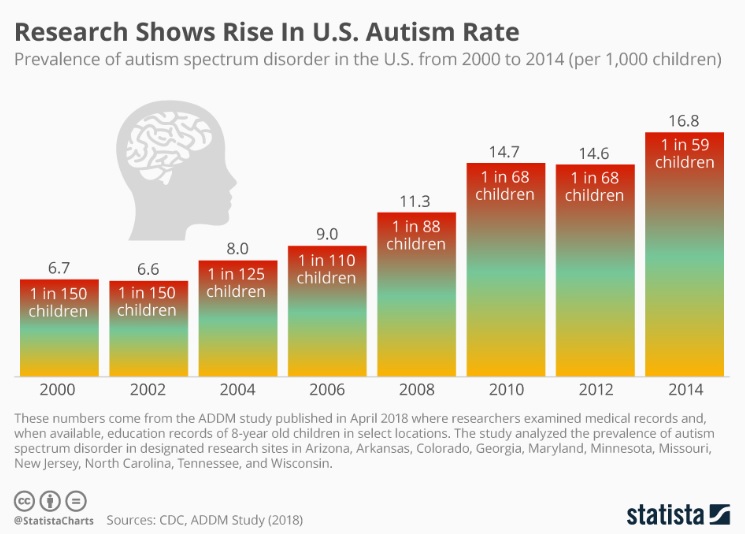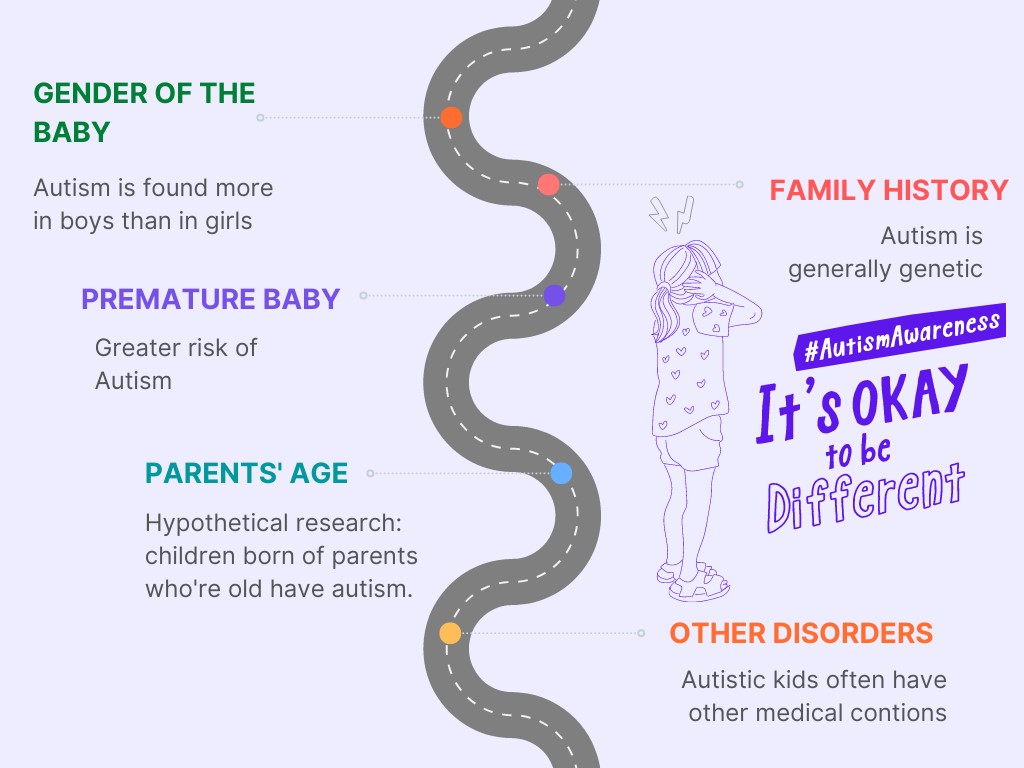Occurrences Of Autism Rises Over The Years
20th June 2022

The Centers for Disease Control and Prevention (CDC) found about 1% of the world's population has autism spectrum disorder. According to the World Health Organization (WHO), approximately 1 in 100 children worldwide has autism.
Autism spectrum disorder (ASD) commonly known as autism is one of the most widespread special cases across the globe. The prevalence of autism is getting accelerated with every passing day. There is a misconception that autism can be cured but it can be managed.
Research shows, kids (mostly) who are diagnosed with autism have genetic disorders, such as Rett syndrome or fragile X syndrome. Other children with autism have genetic changes (mutations) and it is quite detrimental. They develop autism in the long run. Genetic mutations are purely hereditary while other issues can be due to some other problems. Autism spectrum disorder includes - childhood disintegrative disorder and an unspecified form of pervasive developmental disorder. It is known as Asperger syndrome.
These days, the number of students with autism is pretty high and that is why apart from special schools, general schools are also practicing inclusive classroom sessions.
However, a genuine question is getting the whole world crazy why is Autism rising so drastically. To be very honest, the rate of rising autism is quite visible due to several factors. It’s not that autism was not this prevalent in the past. Autism spectrum disorder has always been quite populated but since the level of awareness has gotten elevated, many cases are getting recognized.

High-quality and multiple layers of screening: Children of age 18-24 months are being screened for autism more than before, leading to the diagnosis of those children. Doctors are dealing with mild cases of autism also to avoid any risk factors. Research suggests that if children are screened during their early childhood, the chances of helping a kid who turns out to be autistic become easier.
Increased awareness: Parents are quite aware of autism and know that hiding it will only increase the risk. As soon as they catch some autistic symptoms in their kids like repetitive behaviors, lack of eye contact, lack of interest in becoming social, etc., they contact a doctor.
Improved health-care system: The diagnostic criteria have shown fantastic performance while identifying if a child is autistic or not. There is no blood test for autism but medical science has become successful to diagnose a child’s behavior, analyze it thoroughly, and then declaring if there is a case of autism or not.
Having said so, special education teachers contribute a lot by suggesting the best medical help for a special kid having ASD. In fact, while planning for an Individualized Education Program (IEP) for specially-abled kids, they create a monumental effect.
The prevalence rate of autism though is quite high yet, it has been observed multiple times that ASD is seen more in boys than girls. The reason being girls have the tendency of masking autism and they can fake it, unlike boys. Thus, diagnosing autism for a girl becomes more challenging than that for boys.
There are certain detrimental factors of autism that can adversely affect a child. The brain of an autistic kid does not process sounds, sights, and smells like an ordinary child’s brain. Besides struggling with an expression of emotions, these kids often have poor speech, anger issues, and certain repetitive behaviors (picking skin, twirling, and neck movements).
These are the risk factors when a child is having ASD:

Gender of a child: The ratio of ASD in boys to girls is 4:1, e.i., a boy is likely to get diagnosed with ASD four times for than a girl.
Family history: Parents conceiving for the 2nd time often have found out that the baby is having autistic character once she/he is born if the first child has autism in the gene.
Other disorders: Children with certain medical conditions have a higher than normal risk of autism spectrum disorder or autism-like symptoms. Examples include fragile X syndrome, an inherited disorder that causes intellectual problems; tuberous sclerosis, a condition in which benign tumors develop in the brain; and Rett syndrome, a genetic condition occurring almost exclusively in girls, which causes slowing of head growth, intellectual disability and loss of purposeful hand use.
Premature baby: Babies who are born before 26 weeks of gestation sometimes have a greater risk of autism spectrum disorder.
Parents' ages: This is still a hypothetical situation but there may be a connection between children born to older parents and an autism spectrum disorder.
Thus the bottom line is due to all this awareness, medical research, and better screening facilities, the prevalence of autism is more distinct. Of course, special educators who have pursued an online course in autism know certain symptoms of autism and thus, they can also suggest parents consult medical help in case they come across any such case. These courses are pretty effective in giving real-life experience to teachers and thus, they can cater to the needs of gifted children to the fullest.
If you want to know more about such online courses in autism for teachers, call our toll-free number: 1800-212-6400.
Written By : Victoria Lewis

